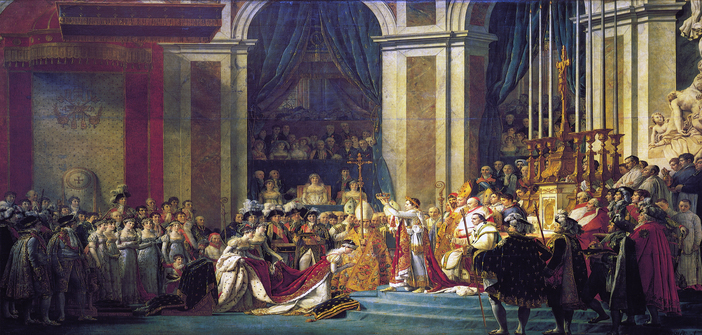On May 5, 1821, two hundred years ago, the first emperor of the French disappeared in the middle of the Atlantic Ocean on the island of Saint Helena. Napoleon, then Bonaparte, who has a history linked to the Côte d’Azur.
Chased from Corsica with his family, he came to Nice for a few months in 1793, as an officer of the Republican army. It was in Nice that he began to make connections. It is in Nice that we have Napoleonic treasures, at the La Villa Massena museum in Nice.
The Napoleonic route starts from the Côte d’Azur. Juan Les Pins is, in fact, the starting point of the march of reconquest. A rich cultural heritage and many hiking trails today allow us to follow in the footsteps of Napoleon and discover a diversity of landscapes on the Côte d’Azur. Exceptional natural sites, nestled between sea and mountains.
To discover, the mythical Napoleonic route which has left a historical imprint on the Côte d’Azur.
NAPOLEON’S LANDING AT GOLFE-JUAN
After being forced to abdicate, Napoleon Bonaparte, exiled on the island of Elba, had only one goal: to escape and overthrow the monarchy of Louis XVIII. Accompanied by his grenadiers, he landed on March 1, 1815, on the blonde sand beach at Golfe-Juan. On the port, near the breakwater, there is a stele commemorating this event. The Emperor then decided to head to Grenoble through the interior of the country to avoid royalist troops. Thus began his reconquest of power; the Napoleonic route was born, with the starting point: the Côte d’Azur.
THE EMPEROR CONTINUES HIS EPIC FROM ANTIBES TO CANNES
Napoleon reached Antibes, a choice not made by chance. The Emperor had stayed there with his family and knew the city well. A tribute is paid to his Imperial Guard at the Saint-Esprit Chapel. His soldiers indeed stopped there to regain strength. In Cannes, the troupe stopped at the foot of Notre Dame de Bon Voyage church for resupply. The next morning, Napoleon and his soldiers headed north after a stop in the village of Mouans-Sartoux.
DISCOVERING GRASSE AND ESCRAGNOLLES
Mountain scenery greeted the fighters as they headed toward the Roccavignon plateau, bypassing Grasse. At the foot of the vast washhouse of the land of roses and jasmine, at Place de la Foux, a stele marks the spot where Napoleon and his soldiers took a break. The triumphant march toward the capital continued by traversing the rugged paths of Saint-Vallier-de-Thiey. At Place de la Libération, a stone bench where the Emperor sat proudly stands under his bust. The Eagle and his troops advanced towards Escragnolles, where the old Napoleonic inn still appears to this day.
THE EAGLE FLIES TOWARDS SÉRANON
The journey through the Maritime Alps ends at the Col de Valferrière. To the west lies the village of Séranon, where the road taken by Napoleon passes at the foot of the Gratemoine Chapel. The Château de Broundet, now in ruins, served as a dormitory for the Emperor after he crossed the department in a single day. This epic led him to Paris and allowed him to regain power during the “Hundred Days” before the defeat at the Battle of Waterloo and his exile on the island of Saint Helena.


